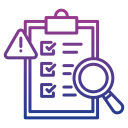
Build Confidence: Developing a Technology Audit Framework
Chosen theme: Developing a Technology Audit Framework. Welcome to a practical, people-first guide for turning scattered controls into a clear, repeatable system that protects value, proves compliance, and strengthens trust. Stay with us, share your thoughts, and subscribe for actionable templates.
Why a Technology Audit Framework Matters
Visibility that reduces blind spots
Without a structured framework, teams chase spreadsheets and miss hidden systems. A robust approach maps assets, owners, and controls, exposing gaps early. The payoff is fewer surprises, faster decisions, and a credible story for leadership and regulators.
Compliance that actually advances strategy
When audits align with business outcomes, compliance stops feeling like a tax. By tying controls to objectives, you prioritize what protects revenue, reputation, and resilience. The framework becomes a lever for better investment choices, not just a checklist.
A quick story: the day the 'mystery server' paid for the audit
A mid-sized manufacturer used a simple framework pilot and found an unmanaged file server powering a critical supplier feed. Decommissioning duplicate services and right-sizing licenses saved six figures annually. The audit moved from cost center to value generator overnight.
Governance and roles: who owns what
Define decision rights and responsibilities using a simple RACI. Adopt the three lines of defense model to clarify ownership: business operations, risk oversight, and independent assurance. Clear roles reduce friction, accelerate remediation, and prevent the classic accountability shuffle.
Asset inventory and data classification as foundations
You cannot audit what you cannot see. Build a living inventory of applications, infrastructure, integrations, and data flows. Classify data by sensitivity and regulatory impact, so scope and testing intensity are risk-aligned and everyone understands why priorities differ.
Control library mapped to standards
Create a unified control set mapped to COBIT, NIST CSF, ISO 27001, and SOC 2. Eliminate duplicates, define clear test procedures, and record authoritative evidence sources. Consistency shortens audits, simplifies reporting, and makes continuous improvement measurable and repeatable.
Scoping and Methodology That Focus Effort
01
Risk-based scoping that targets impact
Use likelihood and impact to size the audit scope. Consider regulatory exposure, customer commitments, data sensitivity, change velocity, and incident history. Focus limited time on control areas that materially affect financial reporting, service continuity, or privacy outcomes.
02
Lifecycle: plan, fieldwork, report, remediate
Standardize the audit lifecycle: planning with stakeholders, evidence-based fieldwork, candid reporting, and tracked remediation. Time-box activities, define acceptance criteria, and pre-book follow-ups. A predictable cadence reduces stress and builds trust across technology and business teams.
03
Sampling and evidence that stand up to scrutiny
Document sampling rationale and preserve immutable evidence where possible. Pull logs from authoritative sources, capture screenshots with timestamps, and tie artifacts to specific control tests. This discipline strengthens credibility with external assessors and speeds repeat audits.


Tooling and Automation for Sustainable Audits
Integrate your GRC platform with a reliable CMDB or asset source. Sync ownership, control mappings, and evidence locations. This eliminates version confusion, reduces manual updates, and gives auditors confidence that the scope and assets reflect current reality.
Tooling and Automation for Sustainable Audits
Automate key tests like privileged access recertification, baseline configuration checks, and patch cadence. Stream alerts to responsible owners and capture remediation proof. Continuous monitoring turns big annual gaps into small weekly corrections that rarely escalate into crises.
Security, Privacy, and Trust by Design
Identity and access: least privilege in practice
Audit joiner-mover-leaver processes, role definitions, and privileged access. Require multi-factor authentication, session logging, and periodic recertification. One fintech reduced dormant admin accounts by eighty percent in a quarter by automating evidence and escalating overdue reviews.


Secure SDLC and DevSecOps through the audit lens
Test code review gates, dependency scanning, secrets management, and infrastructure-as-code policies. Evidence should flow from pipelines automatically. Auditing the path to production protects velocity while proving that security is consistent, measurable, and integral to delivery.
Document which controls are owned by your team versus AWS, Azure, or Google Cloud. Reference provider attestations and configure compensating controls. Clarity prevents duplicated effort and ensures genuine gaps are owned, funded, and closed with urgency.

Change Management and Culture That Stick
Communicate findings without blame
Frame issues as risks to shared goals, not personal failings. Offer context, options, and support. When teams trust the process, they raise issues earlier, evidence quality improves, and remediation becomes a collaborative habit rather than a defensive battle.
Enablement: training auditors and auditees
Create short, role-based training on evidence expectations, timelines, and tooling. Pair new auditors with seasoned mentors. Regular office hours turn confusion into confidence, reducing cycle time and ensuring the framework is understood, respected, and actually followed.
Continuous improvement loops with real feedback
After every audit, run a retrospective with auditees. Retire controls that add little value and invest where bottlenecks persist. Incremental upgrades compound, making each subsequent audit faster, clearer, and more valuable to everyone involved.
